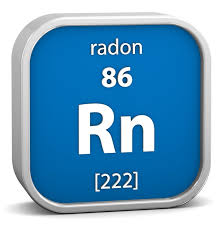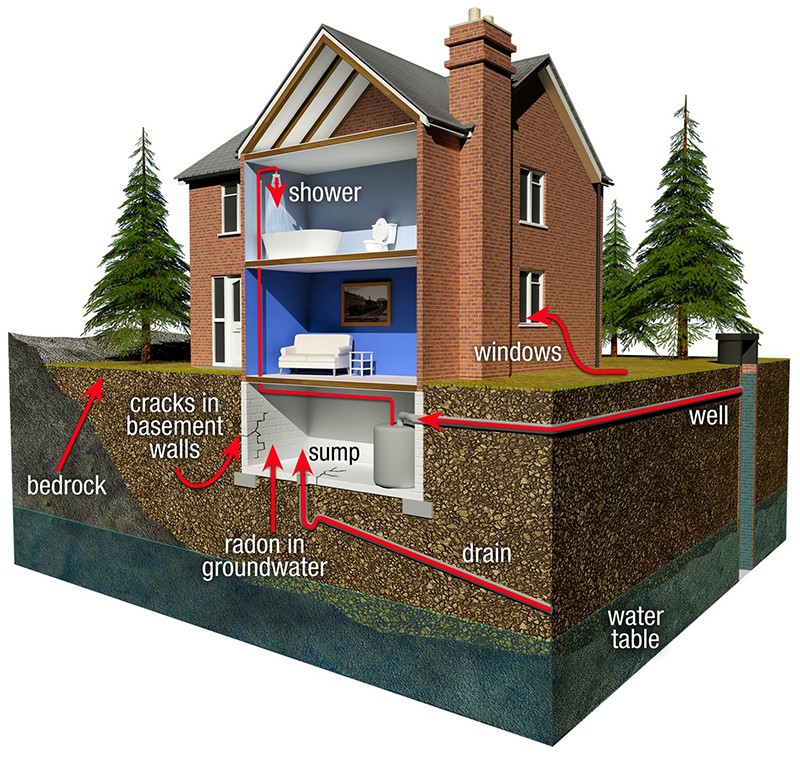Time to test home for radon gas?
Posted by Steve Harmer on Monday, November 16th, 2015 at 7:09pm.
Radon gas is the second-leading cause of lung cancer after smoking.

What is Radon?
Radon is a radioactive gas that occurs naturally when the uranium in soil and rock breaks down. It is invisible, odourless and tasteless. When radon is released from the ground into the outdoor air, it is diluted and is not a concern. However, in enclosed spaces, like homes, it can sometimes accumulate to high levels, which can be a risk to the health of you and your family.
Most homes in contact with the ground will contain some amount of radon gas. Radon becomes more of a concern when it reaches high levels, with levels varying across the country. According to Health Canada, about seven per cent of Canadian homes have radon levels that may be putting residents at risk. In Interior B.C., there are some hot-spot areas with high radon levels in approximately 40 per cent of homes.
Being heavier than air, radon a ccumulates in low-lying areas like basements and can be drawn to higher floors within the building through natural indoor air movement. Radon, in combination with tobacco smoke, can increase the risk substantially.Health Canada estimates one in three smokers exposed to high radon levels will develop lung cancer.
ccumulates in low-lying areas like basements and can be drawn to higher floors within the building through natural indoor air movement. Radon, in combination with tobacco smoke, can increase the risk substantially.Health Canada estimates one in three smokers exposed to high radon levels will develop lung cancer.
Radon gas is colourless, odourless and tasteless, so the only way to know if radon levels in your home are high is to conduct testing. The best time to test your home is now through April.During the cooler months, windows and doors are often closed and rising warm air in a home draws more radon from the ground. Testing a home is easy and inexpensive.Testing involves placing a small puck-like kit within the lowest area of the home that could be occupied for more than four hours per day.The test results for your home can be very different from your neighbours.This is because factors beyond the local geology influence the levels within a building. Essentially, radon takes the path of least resistance, a varying factor between homes.
Radon can enter a home through the foundation, including concrete, and more so through cracks in a foundation or dirt floor, such as older crawl spaces.It can also enter a home through the ventilation system. The bottom line is everyone should test their homes to see if this gas — dubbed as the silent killer — is lurking. If elevated radon levels are found, basic measures can be taken to address the problem. — Interior Health Authority
How do I Test my Home for Radon?
There are two options for testing a house for radon: to purchase a do-it-yourself radon test kit or to hire a radon measurement professional. If you choose to purchase a radon test kit, you must closely follow the instructions on how to set up the test. If you choose to hire a service provider to perform the radon test in your house, it is recommended that you ensure they are certified and will conduct a long term test for a minimum of 3 months.
Where can I get a Radon Test Device?
Radon test kits may be purchased over the phone, on the internet or from home improvement retailers. The radon test kits include instructions on how to set up the test and to send it back to a lab for analysis once the testing period is over. The cost of testing ranges from $25 to $75.
Where in my Home should I Perform the Test?
To provide a realistic estimate of the radon exposure of your family, all measurements should be made in the lowest lived-in level of the home. That means the lowest level that is used or occupied for more than four hours per day. For some, this may be a basement with a rec room, for others it will be the ground floor. If you only use your basement once a week to do laundry, for example, there is no need to test on that level - your exposure time will not be long enough to create health effects.
For more information, go online to hc-sc.gc.ca/hl-vs/iyh-vsv/environ/radon-eng.php.
Test kits are available from BC Lung Association.
